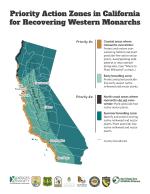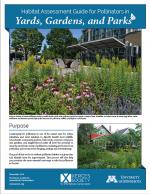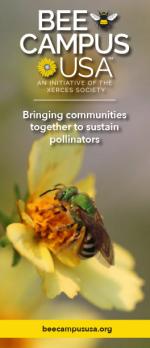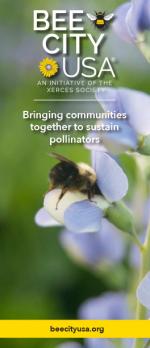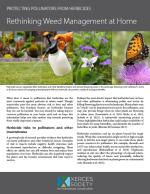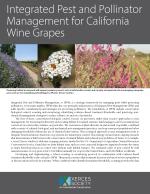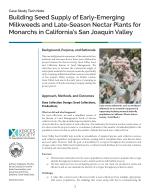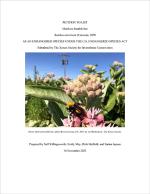As a science-based organization, the Xerces Society produces dozens of publications annually, all of which employ the best available research to guide effective conservation efforts. Our publications range from guidelines for land managers, to brochures offering overviews of key concepts related to invertebrate conservation, from books about supporting pollinators in farmland, to region-specific plant lists. We hope that whatever you are seeking—whether it's guidance on making a home or community garden pollinator-friendly, advice on developing a local pesticide reduction strategy, or detailed information on restoring habitat—you will find it here!
Find Publications
Use the search functions to sort by publication type (books, guidelines, fact sheets, etc.), location, and/or subject (agriculture, gardens, pollinators, pesticides, etc.).
The western monarch population is at a critically low level. Work to improve monarch habitat in California is more important than ever. This fact sheet identifies the most important actions that should be taken in five different regions of California, and provides notes and guidance on selecting the appropriate species of milkweeds and nectar plants.
The goal of this tool is to evaluate pollinator habitat at a given urban, suburban, or rural site and identify areas for improvement. This process will also help users prioritize the most essential next steps to take for pollinators at the site.
Bringing Communities Together to Sustain Pollinators
Bee Campus USA brings college communities together to sustain pollinators by increasing the abundance of native plants, providing nest sites, and reducing the use of pesticides. Affiliates of Bee Campus USA also work to inspire others to take steps to conserve pollinators through education and outreach. Learn how your college can join Bee Campus USA.
Bringing Communities Together to Sustain Pollinators
Bee City USA brings communities together to sustain pollinators by increasing the abundance of native plants, providing nest sites, and reducing the use of pesticides. Affiliates of Bee City USA also work to inspire others to take steps to conserve pollinators through education and outreach. Learn how your community can join Bee City USA.
Rethinking Weed Management at Home
Though insecticides pose the most obvious risk to bees and other pollinators, this factsheet focuses on herbicides because they too can be harmful. Learn about herbicides, their risk to pollinators, their use cases, and alternative solutions to manage weeds and unwanted plants.
Monarch Butterflies: Xerces Society Policy on Butterfly Releases
Washington State
The objective of this conservation strategy is to identify geographic areas within the state of Washington with the highest potential to support rare and declining bumble bee species and provide guidance and recommendations for management of those areas. Maintaining sufficient populations of each focal species is essential to the long-term persistence of these animals. This will require protecting and enhancing habitat for foraging, nesting, and overwintering, while ensuring connectivity between habitat areas, across jurisdictions.
Integrated Pest and Pollinator Management, or IPPM, is a strategic framework for managing pests while protecting pollinators. As its name implies, IPPM takes the core principles and practices of Integrated Pest Management (IPM) and adds specific considerations and strategies for protecting pollinators. The foundations of IPPM include conservation biological control, scouting and monitoring, identifying evidence-based treatment thresholds, and practicing non-chemical management strategies to reduce reliance on and use of pesticides.
Case Study Tech Note
This case study presents a summary of a three-year project to increase the commercial supply of native plant materials for western monarchs, specifically early-emerging milkweeds and late-season nectar plants of San Joaquin Valley ecotypes.
The Morrison bumble bee (Bombus morrisoni) was proposed for listing in 2023 through a petition submitted by the Xerces Society.

